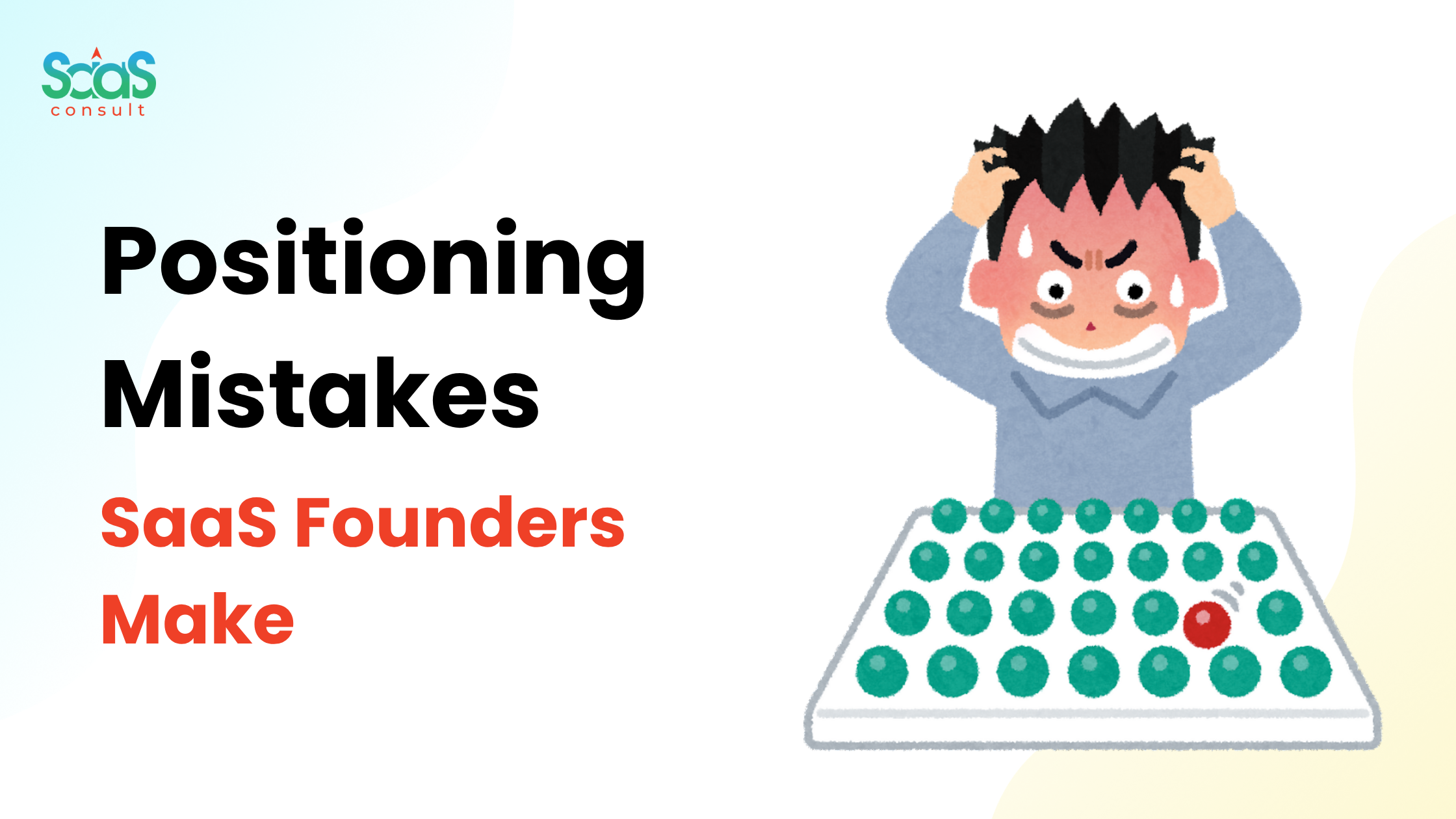If your SaaS product is great but still not converting — chances are it’s not a product problem. It’s a positioning problem.
This article breaks down the most common SaaS positioning mistakes founders make, how to spot them, and how to fix them with better ICP clarity, messaging, and GTM alignment.
What Is SaaS Positioning, Really?
Positioning is the answer to one simple question: “Why should this customer choose your product over others?”
It’s not just a tagline. It’s the foundation for your messaging, pricing, GTM channels, and sales strategy.
Related: GTM Strategy for SaaS
Mistake #1: Positioning for a Market You Wish Existed
Many SaaS teams position their product around a trend (e.g., AI, Web3, no-code) even when their current users don’t care.
What happens:
- High bounce rates from homepage
- Confused demos
- Inbound leads that never convert
Fix it:
- Interview 5 of your happiest customers
- Ask: “What problem were you solving when you chose us?”
- Build positioning around current reality, not future narrative
Also read: SaaS ICP Definition
Mistake #2: Copying Competitor Messaging
You visit 3 competitors and pick the most convincing tagline. The result? You sound like everyone else.
What happens:
- You compete on price
- No distinct point of view
- Users can’t tell you apart from 5 other tools
Fix it:
- Identify the job to be done your customer is hiring your product for
- Position around the friction or gap others ignore
- Use your customer language, not category jargon
Mistake #3: Positioning Based on Features, Not Outcomes
SaaS founders often focus on “what it does” instead of “what it changes.”
Examples:
- “AI-powered workflow automation”
- “Cut your proposal time from 3 hours to 20 minutes”
Fix it:
- Rewrite your homepage headline using this format:
“We help [ICP] achieve [measurable result] by [unique approach]” - Align your marketing operations tracking with this outcome
Mistake #4: Serving Too Many Personas at Once
Trying to speak to founders, marketers, designers, and developers? You’ll resonate with no one.
What happens:
- Low activation rates
- Inconsistent sales conversations
- Split messaging across pages and channels
Fix it:
- Prioritize one primary persona inside your ICP
- Build your funnel (ads, email, homepage) just for them
- Create secondary personas later via dedicated landing pages
Mistake #5: Not Updating Positioning as You Grow
Positioning is not set-and-forget. Your best customer profile will evolve — so should your positioning.
What happens:
- You keep talking to startups when you’ve moved to mid-market
- You miss opportunities in messaging, pricing, and onboarding
Fix it:
- Revisit positioning every 6–9 months
- Use input from sales calls, churn interviews, and CS
- Track shifts in win/loss patterns
Positioning vs Messaging vs ICP (Quick Breakdown)
| Concept | Purpose | Core Question |
|---|---|---|
| ICP | Target the right accounts | “Who is most likely to succeed with us?” |
| Positioning | Stand out with strategic clarity | “Why us over anyone else?” |
| Messaging | Communicate benefits to each persona | “What does this person need to hear now?” |
They’re connected. Get ICP wrong → Positioning is off → Messaging misses the mark.
How to Test and Improve Your Positioning
- Rewrite your homepage headline using your updated positioning
- Run a $50 Google Ads test to measure click-throughs and headline clarity
- Check demo-to-close rates before and after messaging update
- Ask sales and SDRs which narrative gets the best reaction
Also read: GTM KPIs to Track
Final Thoughts
If your SaaS isn’t growing the way it should, the answer is rarely “more leads.” It’s often clearer positioning.
- Position around problems your ICP already knows they have
- Avoid copying others — find your angle
- Revisit and test messaging every quarter
Need help fixing your SaaS positioning? Book a call — we’ll get it aligned, fast.
